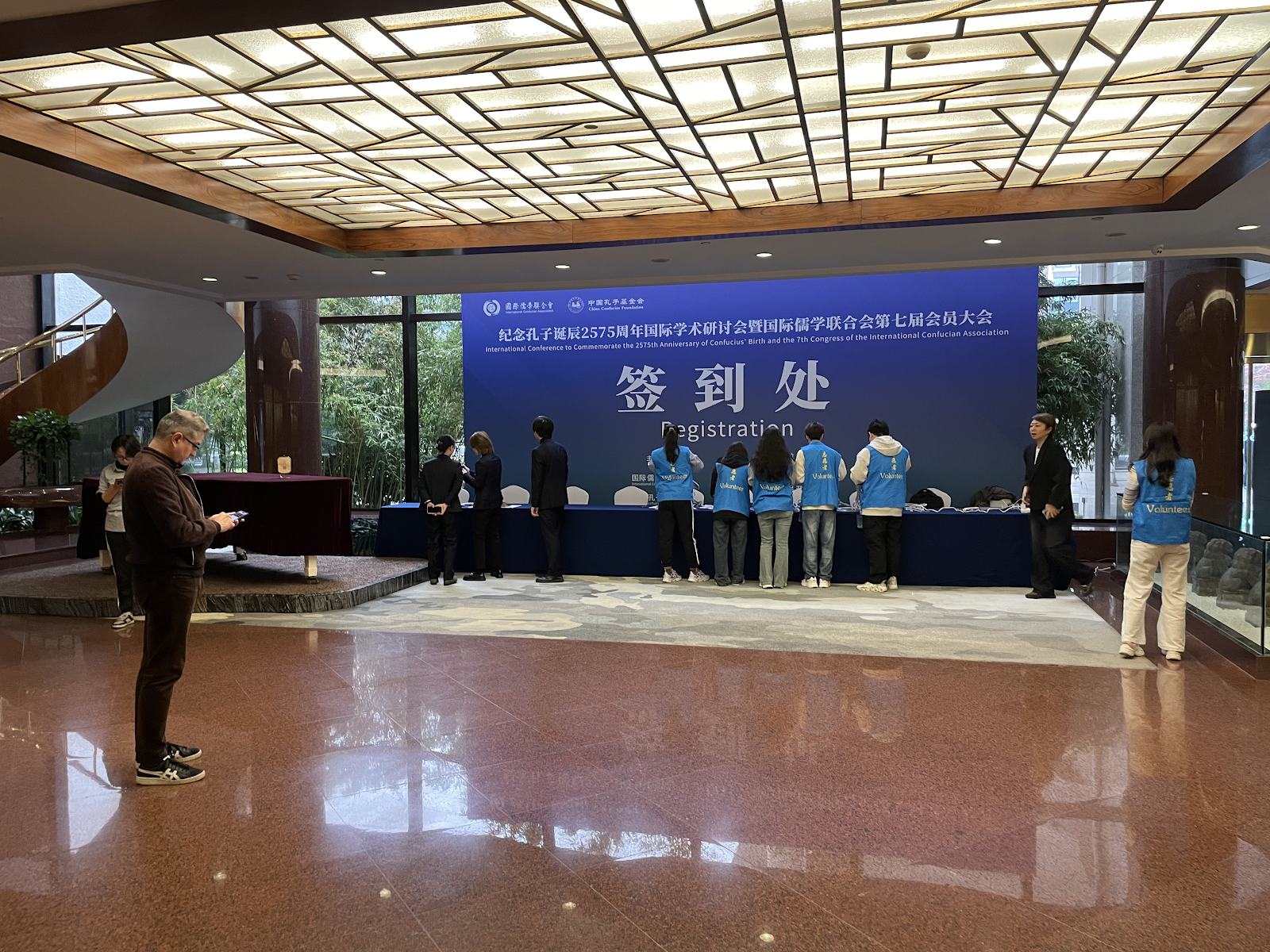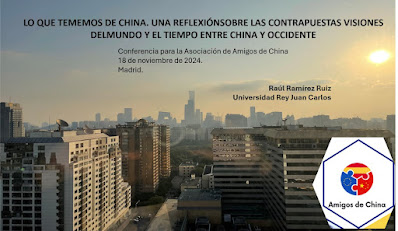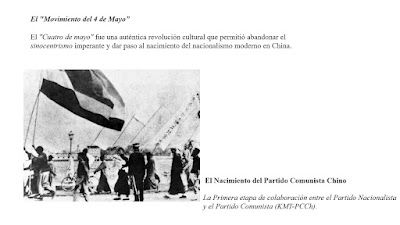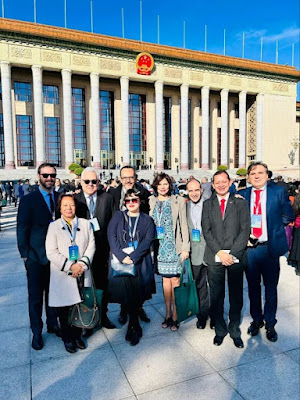DOI: 10.15848/hh.v17.2228.
La historiografía China, ejemplo de una evolución endógena impactada por Occidente.
Chinese historiography serves as an exemplar of endogenous evolution profoundly influenced by Western interactions
Raúl Ramírez Ruiz
raul.ramirez@urjc.es
https://orcid.org/0000-0002-1690-7200
Universidad Rey Juan Carlos, Centro de Investigacion de Estudios de Iberoamerica de la Universidad Rey Juan Carlos, Estudios Históricos y Sociales, Lengua Española, Literatura, Filosofía Moral y Didácticas Específicas, Madrid, España.
Dossiê ''Tradições, temporalidade e narrativa na historiografia chinesa''
Resumen:
La historiografía china se vino desarrollando al margen de la occidental. Fruto de una civilización propia se construyó sobre unos presupuestos y unas metodologías distintas. El impacto de Occidente sobre China en el siglo XIX, no pudo dejar de influir en ella. Vista la superioridad técnica de Occidente los intelectuales chinos intentaron adaptar su forma de hacer historia a la de los foráneos. En este artículo, partiendo de las propias dudas sobre dicho proceso que hoy día muestran los académicos chinos, pretendemos hacer un repaso a la evolución de la historiografía china desde los primeros intentos de reforma hasta los cambios introducidos por el marxismo y su adaptación a la China de la Reforma y Apertura.
Palabras Clave: Historiografía China. Historia China. Historiadores chinos.
INDICE:
1.- Introducción: debates sobre la historiografía china
2.- Historiografía tradicional china y sus características
3.- Los reformadores Qing y la crisis del mundo sinocéntrico
Los reformadores Qing
El debate “sustancia frente a función”
4.- El nacimiento de la nueva historia china
Kang Youwei
Liang Qichao
Tan Citong
Yan Fu
5.- La revalorización de la cultura popular china: Gu Jiegang, Hu Shih y
Wang Guowei
El Reforzamiento de los Conservadores: Wang Guowei y la arqueología
6.- Los “cuatro grandes historiadores” de la china moderna o de los tiempos modernos
7.- El Marxismo
8.- La historiografía en la República Popular China
Los “Diecisiete años” (1.949-1.966)
La historia en tiempos de “Reforma y Apertura” (1978-hoy)
9.- Conclusión
Bibliografía:
BAI, Shouyi. An Outline History of China, Foreign Languages Press, 2008.
BEASLEY, W. G., & PULLEYBLANK, E. G. Historians of China and Japan, Oxford University Press, 1961.
CHOU, Grace Ai-ling. Ai-ling Confucianism, Colonialism, and the Cold War Chinese Cultural Education at Hong Kong’s New Asia College, 1949-63, Leiden: Brill. ISBN 9789004217348, 2011.
DE BARY, THEODORE, William. Sources of Chinese Tradition: From 1600 Through the Twentieth Century. Published by Columbia University Press, ISBN 0-231-11271-8, p. 364, 2001.
FUNG, E. S. K. The Intellectual Foundations of Chinese Modernity: Cultural and Political Thought in the Republican Era. Cambridge University Press, 2010.
GUO, Shaotang. The Cultural Impact and Transcendence: Contemporary History Research in Hong Kong, Historical Research, Beijing, 2003.
GUO, Yingjie. Cultural Nationalism in Contemporary China: The search for national identity under reform. Routledge Curzon Studies on China in Transition, 2004.
HUNG-YUK, Ip, TZE-KI, Hon, CHIU-CHUN, Lee. The Plurality of Chinese Modernity: A Review of Recent Scholarship on the May Fourth Movement, Modern China 29.4, pp. 490-509, 2003.
HE, Zhaowu, BU, Jinzhi, TANG, Yuyuan., & SUN, Kaitai. An intellectual history of China. Harvard University Press, 2008.
HON, Tze-Ki. Ethnic and Cultural Pluralism: Gu Jiegang’s Vision of a New China in His Studies of Ancient History, Modern China, núm. 22, pp. 315–339, 1996.
LI, Y. The values of Chinese, China Renmin University Press, 2012.
LIU, Zhonghan. Algunas opiniones al artículo de la investigación de la historia china en los últimos cincuenta años, Historical Research, Pekín, 2004.
LUO, Zhitian. Change and continuity in the recent 30 years of research on modern Chinese history: Some unsystematic reflective thoughts, Frontiers of history in China, núm. 4, 484-485, 2009.
NIU, Guanjie. China’s historical research since the new century, Albolafia: Revista de Humanidades y Cultura, núm. 7, 91-92, 2016.
NIU, Dayong. The crisis of History’ and the reform in history education at Universidad de Pekín in recent years, Disponible en Http://www.hist.pku.cn/research/niudayong.htm, Con acceso en noviembre de 2019.
PALACIOS BAÑUELOS, Luis, & RAMÍREZ-RUIZ, Raúl. China. Historia, pensamiento, arte y Cultura. Almuzara, 2011.
PENG, Peng. Decentralizing the Origin of Civilization: Early Archaeological Efforts in China, History of Humanities, núm. 6, pp. 515–548. doi:10.1086/715935. ISSN 2379-3163. S2CID 244133983, 1 de octubre de 2021
RAMÍREZ-RUIZ, Raúl. Historia de China Contemporánea. Editorial Síntesis, Madrid, 2018.
RAMÍREZ-RUIZ, Raúl. La historia China desde su propia óptica. Una historia en espiral, Albolafia: Revista de Humanidades y Cultura, núm. 7, pp. 141-168, 2016.
SHANG, Chuan. Historical Traditions and Late Ming Studies, Historical Research, Beijing, 2003.
SANGBING. Asociación de Historia China en la Primera Mitad del Siglo XX, Investigación Histórica, Pekín, 2004.
SCHELL, Orville. Discos and Democracy: China in the Throes of Reform. Pantheon Books, 1989.
SHEN, Fuwei. Cultural flow between China and outside world throughout history. Foreign Languages Press, 2009.
WANG, Q. Investigación de la historia en Taiwán desde cincuenta años: linaje, métodos y tendencia, Maitian Publishing Company, Taipei: 2002.
WANG, Xuedian. La investigación de la historia china en los últimos cincuenta años, Historical Research, Pekín, 2004.
XIAO, Jiefu., LI, Jinquan. An Outline History of Chinese Philosophy (II). Foreign Languages Press, 2008.
XIE, Weiyang. Algunas cuestiones importantes de la investigación de la historia antigua china en el siglo XXI, Historical Research, Pekín, 2003.
YU, Pei. Cognición histórica: la creatividad del sujeto y su conciencia, Historical Research, Beijing, 2003.
ZHANG, Haipeng. The collected Works of Zhang: exploring the process of Modern Chinese history. Beijing, 1998.
Enlaace: https://www.historiadahistoriografia.com.br/revista/article/view/2228






























